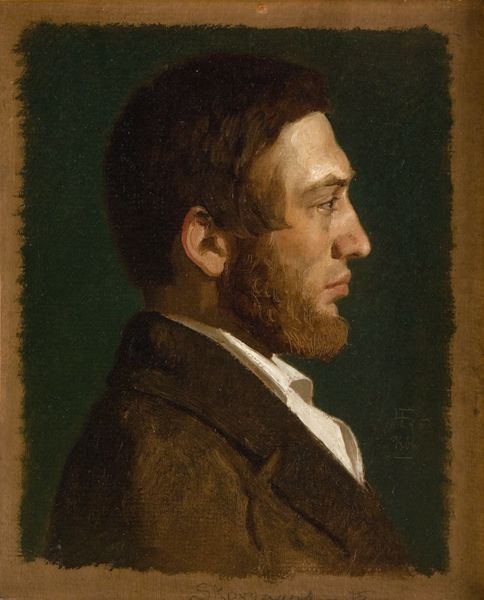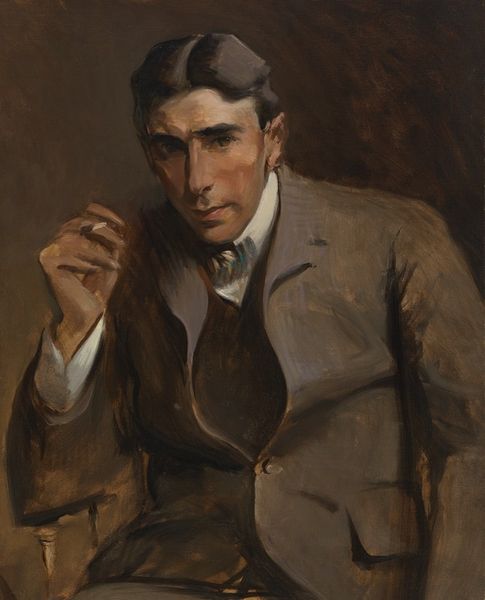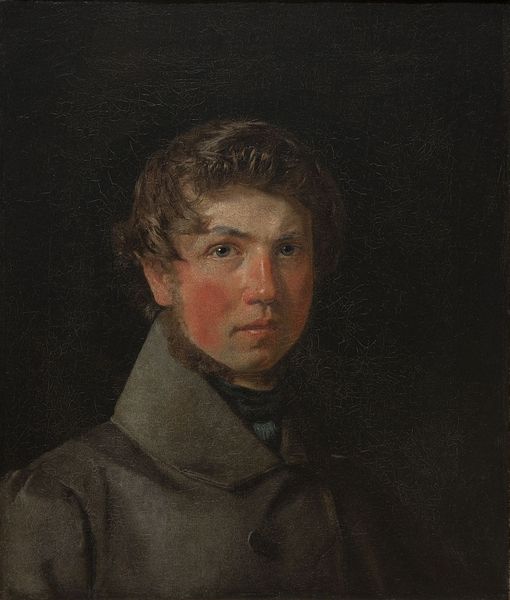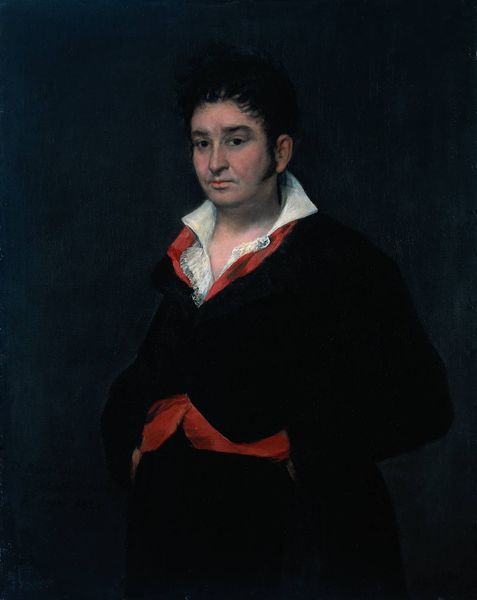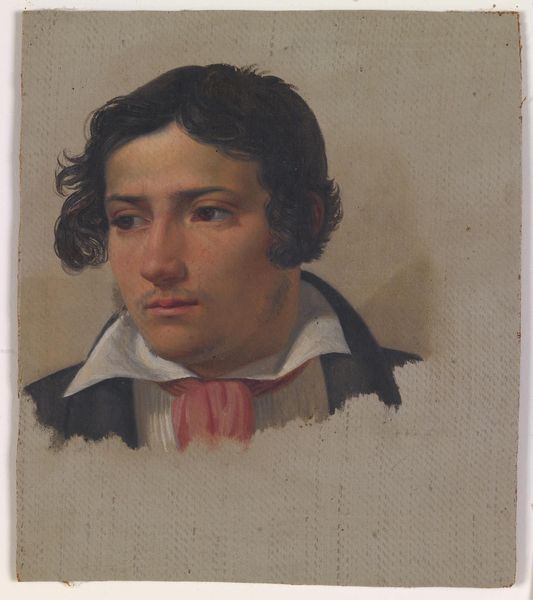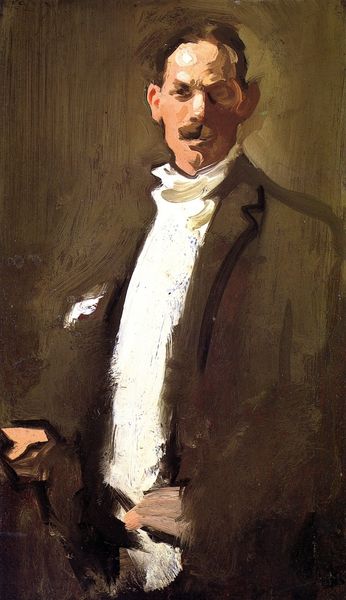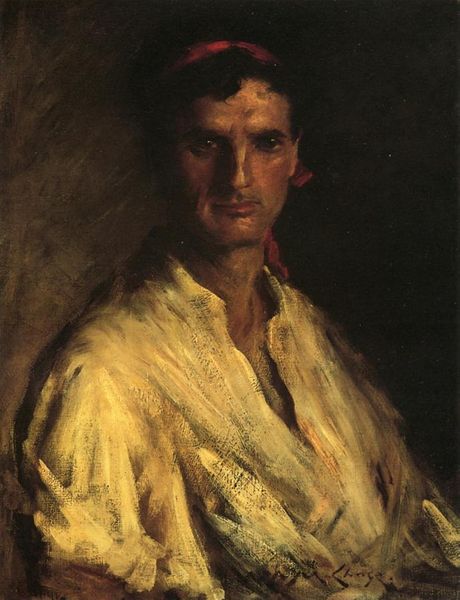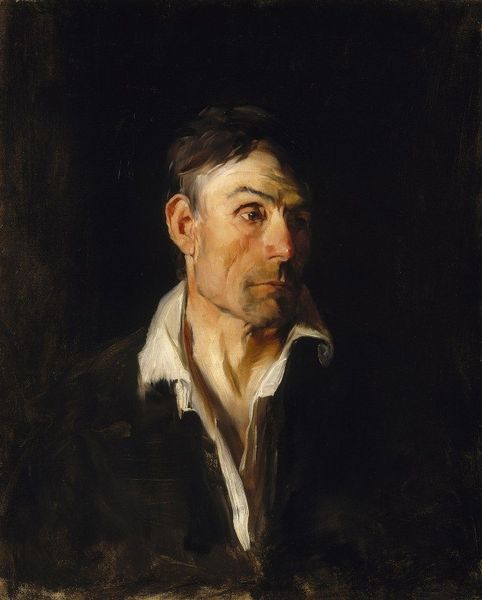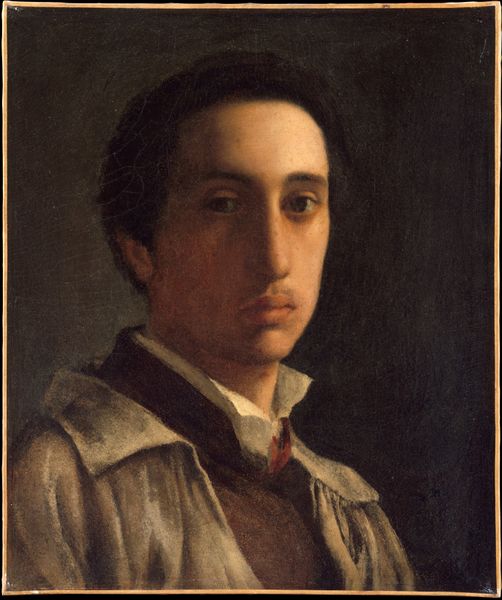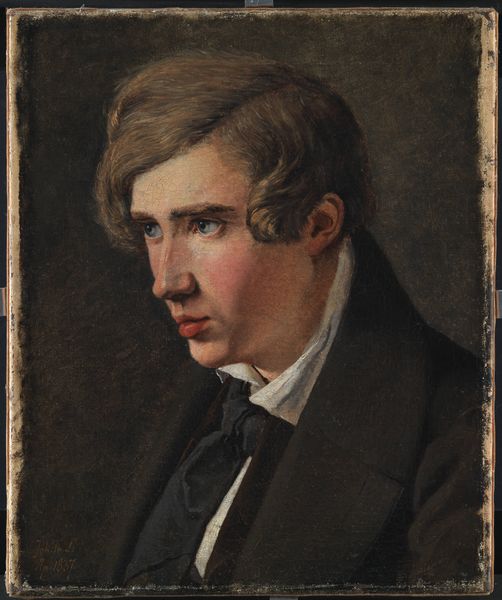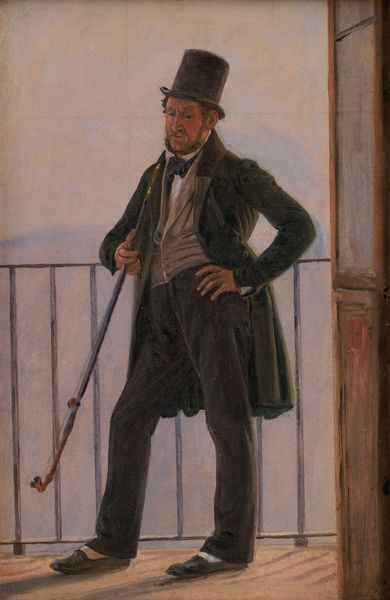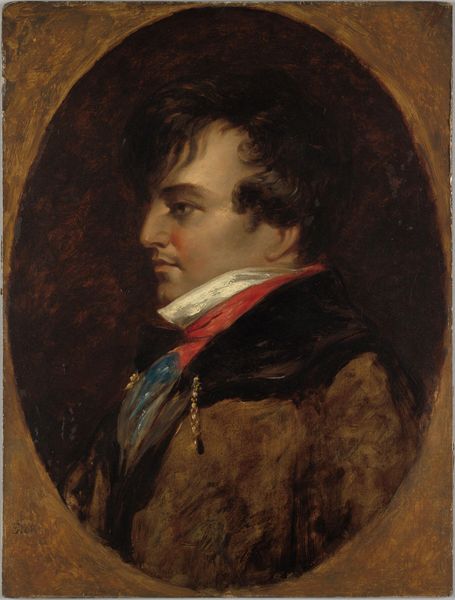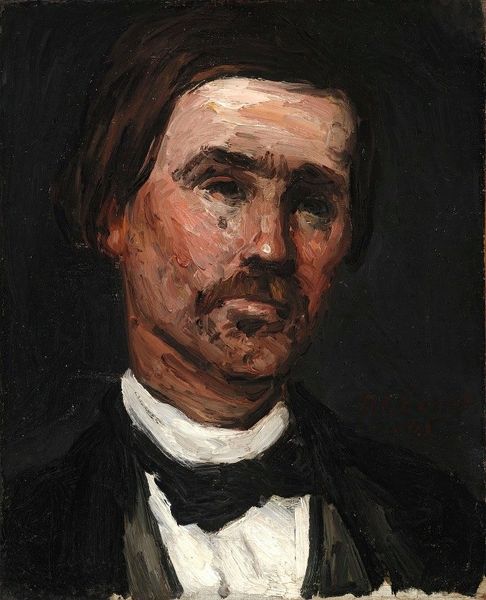
#
portrait
#
oil painting
#
portrait reference
#
acrylic on canvas
#
portrait head and shoulder
#
men
#
animal drawing portrait
#
portrait drawing
#
facial portrait
#
portrait art
#
fine art portrait
#
digital portrait
Dimensions: 34 x 27 in. (86.4 x 68.6 cm)
Copyright: Public Domain
Curator: Here we have John Wesley Jarvis’s oil on canvas portrait of Alexander Anderson, dating from around 1815. Editor: It has a distinctly somber feel, almost unfinished in its edges, but the face is so lifelike, really drawing you in. Curator: It’s interesting you say unfinished; Jarvis was known for his rapid painting style and sometimes did leave the backgrounds loosely rendered. Anderson was a prominent physician and engraver, notable for bringing wood engraving to America. The inclusion of what seems to be a printing block here suggests his profession and its ties to broader social functions like circulating images. Editor: Absolutely, placing him with his tools is powerful. It prompts thinking about the distribution of knowledge and visual culture during that period, specifically considering that the medium allowed imagery to be disseminated broadly at the time. Who had access to these images, and what narratives were being promoted? Curator: And where did Jarvis himself fit into those production channels? He gained renown for portraiture but also took on commissions that reveal shifting patronage networks of the early 19th century. Exploring the materials—canvas, pigments, the techniques for oil painting—leads us back to thinking about accessibility to those materials. The type of labor of producing each one matters significantly. Editor: Agreed. This piece is fascinating because it encapsulates the tensions between individual skill, class, and social roles. Anderson, the physician-engraver, and Jarvis, the celebrated yet at times seemingly rushed portraitist, both navigating societal expectations. Curator: I see this work less about celebrating individual genius, but rather investigating where different labors and trades intersected within a larger, changing system of artisanal production. Editor: And by extension, what values underpinned the societal structures these men operated within. It really goes beyond just the subject to make a visual statement about 19th-century American identity as it was forming. Curator: It’s not just the image, but its physical creation, its place within evolving workshops that reveals something really complex about labor. Editor: Exactly! Now I find myself wondering how prints of Jarvis’ paintings circulated too, shaping perceptions about people just like Anderson.
Comments
No comments
Be the first to comment and join the conversation on the ultimate creative platform.
